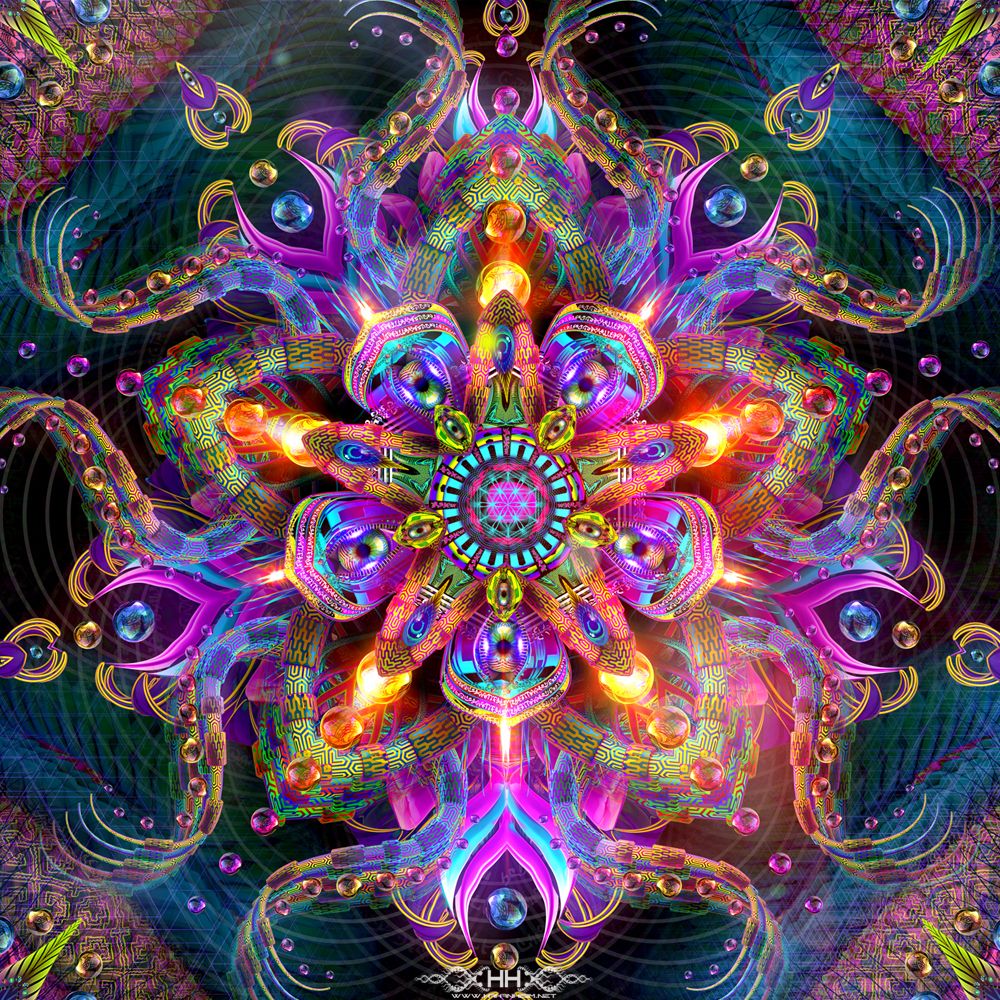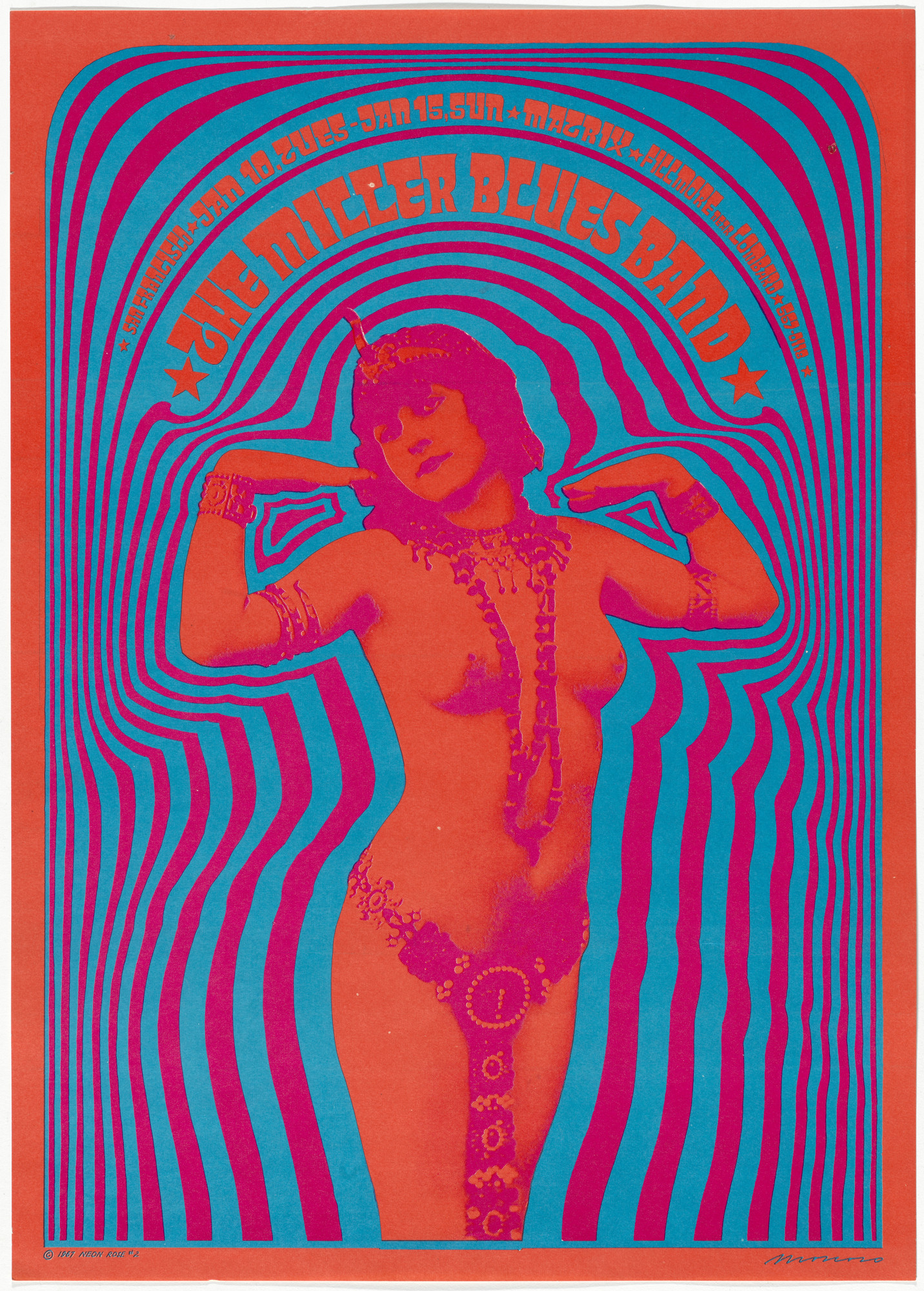The aesthetic that I chose to explore was psychedelic art. It originated in the 1948, and is only possible with Albert Hofmann’s discovery of LSD. Originally, psychedelic art was literary with notable authors such as Lautreamont, and Louis-Ferdinand Celine. Then in the 1960s the aesthetic turned into an artform. Artists such as Rick Griffin and Victor Moscoso were at the forefront of the psychedelic aesthetic. They were artists in San Francisco who designed posters for psychedelic rock, such as the poster down below by Victor Moscoso.
As psychedelic art progressed throughout the 1970s it evolved. Not only did it gain international traction, but the art style changed as well. One forerunner of the psychedelic aesthetic was Bridget Riley, a British artist who created optical illusions in her art. Another addition was light shows that were specifically design for the psychedelic aesthetic by projecting oils and dyes. They were a new form of art in rock concerts and would pulse with the music to create a new “trippy” environment. This allowed the psychedelic art that used to only be on posters into the concerts as well.
This is the setup for the light show. Oils and dyes are inserted into a dish on a projector, and someone would shake, jiggle, and move the dish around to create a different effect. By recording this and looping it, the light shows were able to force the oils to go along with the beat of the song.
As technology improved, and digital art became available, psychedelic art evolved again, this time using fractal generating software. Fractals are a mathematical geometry that is arbitrary in size. No matter how far in or out you zoom, you will never be able to capture the full size of the shape. This was highly desired in the psychedelic art world because it allowed the artist to accurately depict their hallucination patterns, and the evolved technology gave the artists more freedom in the development of their art.
As you can see in the video above, fractals are a big improvement to the dyed oils and projector. The creative freedom that comes with this new technology allows artists to create some amazing shows. Because of the advancement of our digital technology, artists can create some amazing psychedelic fractals, such as the featured image. And while the digital age has had a pivotal impact on psychedelic art, it’s not the only thing keeping it alive. Installments such as Meow Wolf is an example of other creative ways that artists can share their psychedelic aesthetic.
The Featured Image is called Asteroidea Venusia, made by T K and can be found in the following link:




2 Comments. Leave new
I didn’t know that the aesthetics origin was through the founding of LSD. The connection makes sense and I’m surprised I never made the revelation myself. I also like how you expand beyond the aesthetic in paintings and discuss how it is used in light shows and fractals. It seems like there has been so many forms of art that has been inspired by the drug itself, it makes me wonder what else has been inspired by the psychedelic aesthetics.
Very cool aesthetic choice! I like how you went into other applications of this aesthetic such as in light shows, which I think is pretty unique to this aesthetic. I also liked how you explained the way it was created with dyes on a projector initially before it involved into digital art. The ties between this aesthetic and it’s history with psychedelic drugs makes me curious to know if a lot of the prominent psychedelic artists you found used drug use experiences as inspiration or if it was not necessarily that way?